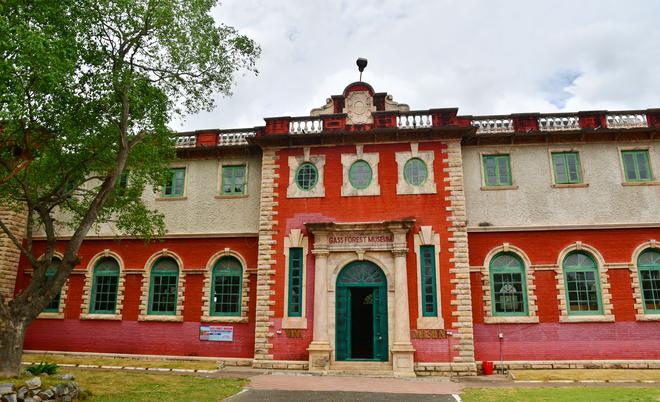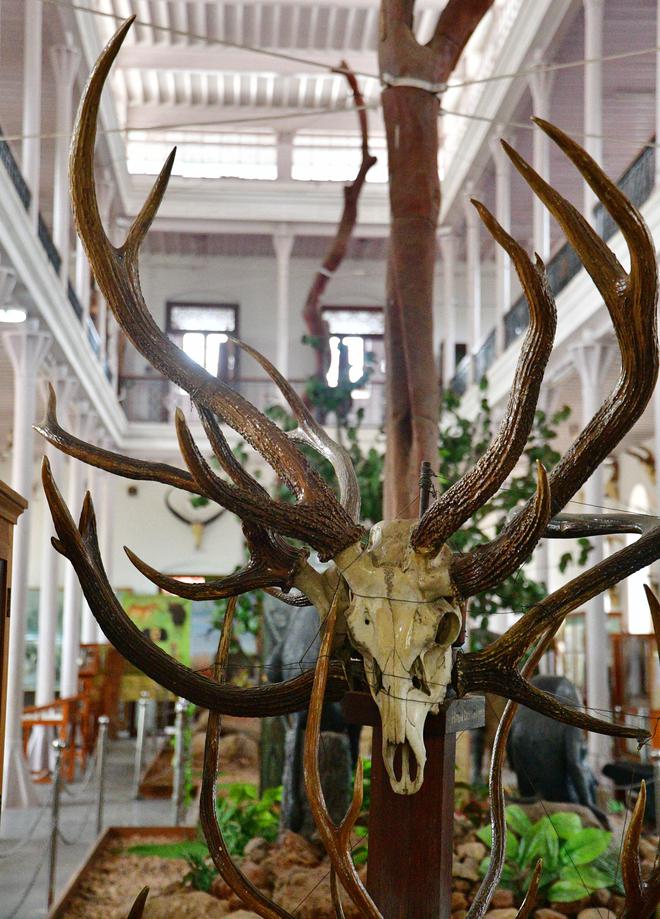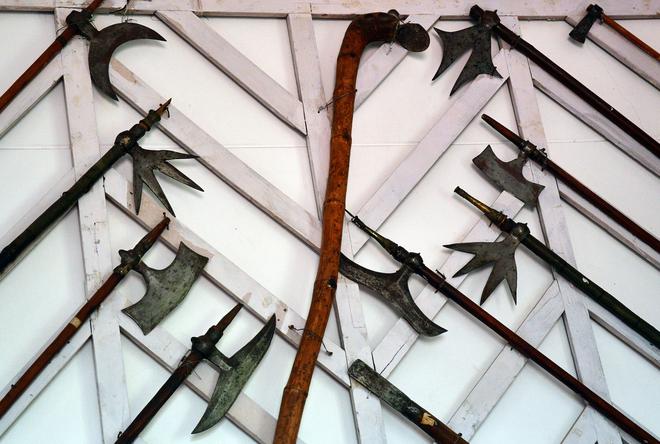A giant stuffed Indian Gaur from the Biligiri Hills of Karnataka greets you even before you enter the towering two-tiered Gothic-style mansion that holds one of India’s largest and oldest natural history collections.
Nestled among greenery at the sprawling forest campus of Tamil Nadu Forest Academy, the iconic 120-year-old Gass Forest Museum named after Horace Archibald Gass (the Conservator of Forests in Coimbatore Southern Circle of the Madras Presidency in 1902) in recognition of his efforts and contributions, hosts as many as 4000 artefacts including wildlife, timber and non-timber forest produce, geological samples, tribal armaments, entomological specimens and forest engineering models. After remaining closed for two years due to the pandemic, the museum, which is maintained by the extension division of Institute of Forest Genetics and Tree Breeding (IFGTB) has now opened to visitors.
“In the ethnology section, there’s a collection of 16 ft long tiger spears used for hunting. It teaches you about the sociological and anthropological aspects of the tribes and also their physical strength. The throw of the spear should cover 360 degrees while hunting a tiger,” says P Chandrasekaran, assistant chief technical officer of IFGTB adding that every single exhibit has a story.
For example, the gaur displayed at the main exhibition room was presented in 1956 by Jayachamaraja Wodeyar, the last Maharaja of the princely state of Mysore while the 14-month and four-month elephant foetuses were gifted by renowned ‘elephant doctor’ V. Krishnamurthy, who performed the highest number of elephant post-mortems. The gaur is accompanied by various other stuffed animals including the great Indian hornbill, Nilgiri langur, slender lorris, and birds.
There is also a skeleton section with the skeleton of an elephant and a bull. “It’s a museum within a museum as the colonial building was built specifically for this purpose. The height of the ceiling was raised to accommodate a massive sandalwood trunk that weighs 1.75 tonnes and is 10.2 metres tall,” states Chandrasekaran.
Other notable exhibits include a cross-section of a 456-year-old teak wood, first man-made Conolly’s teak wood, and over 400 timber panels. This gives us a peek into history of the East India Company’s arrival and trading.

The entomology section has insects, beetles and butterflies on pins that have been in mahogany display cases for more than a century. “I noticed marbled map, a butterfly species that is distributed across South East Asia up to north east India till Andhra. Other rare species are autumn leaf and five band swordtail,” says A Pavendhan, founder of Tamil Nadu Butterfly Society. “Besides a comparative study of evolution of size, we can also understand how habitat destruction wiped off a few species. Adding common names along with scientific names and adding a display of new species can be helpful, especially for students.”
The mycology section has fungal species that occur in the forests and have an important role to play in the growth of trees. While the wildlife artefacts are disturbed only to polish, periodically change formalin and maintain moisture content, the seeds, soils and fungi collections are updated regularly. However, preserving biological specimens poses a challenge.

It is believed that in 1902, H A Gass used his verandahs and a room above his office to showcase interesting specimens he picked up from forests across India. By 1906, his collection with 358 exhibits, had outgrown this space and was transferred to the current structure. “It’s the history of the land,” says C Kunhikannan, IFGTB director. “A result of the efforts of one man, HA Gass, who painstakingly built the repository on natural history for the benefit of future generation of students, researchers, and the public.”
An educentre attached to the museum sensitises students on conservation. “It has to begins with a visit here, a complete forest museum,” says S Saravanan, head of extension division of IFGTB. “ Besides unique exhibits at the building, don’t miss to see the spectacular Baobab tree towering among the boulevard leading to the museum. This tree which you see here can otherwise be found only in Africa,” says P Pramod, senior scientist of SACON.

The museum, which hosts over 50,000 visitors in a year maintains a Visitor’s Diary: day one features an entry by the first visitor, Lord Ampthill, the Governor of Madras presidency in 1902. .
The museum will be open from 9 am to 5.30 pm on all working days except Saturday, Sunday and declared holidays with an entry fee of ₹40 for adults and ₹20 for children. Museum curator can be reached at 0422 2450307.







